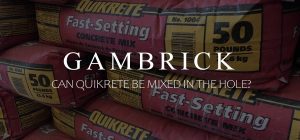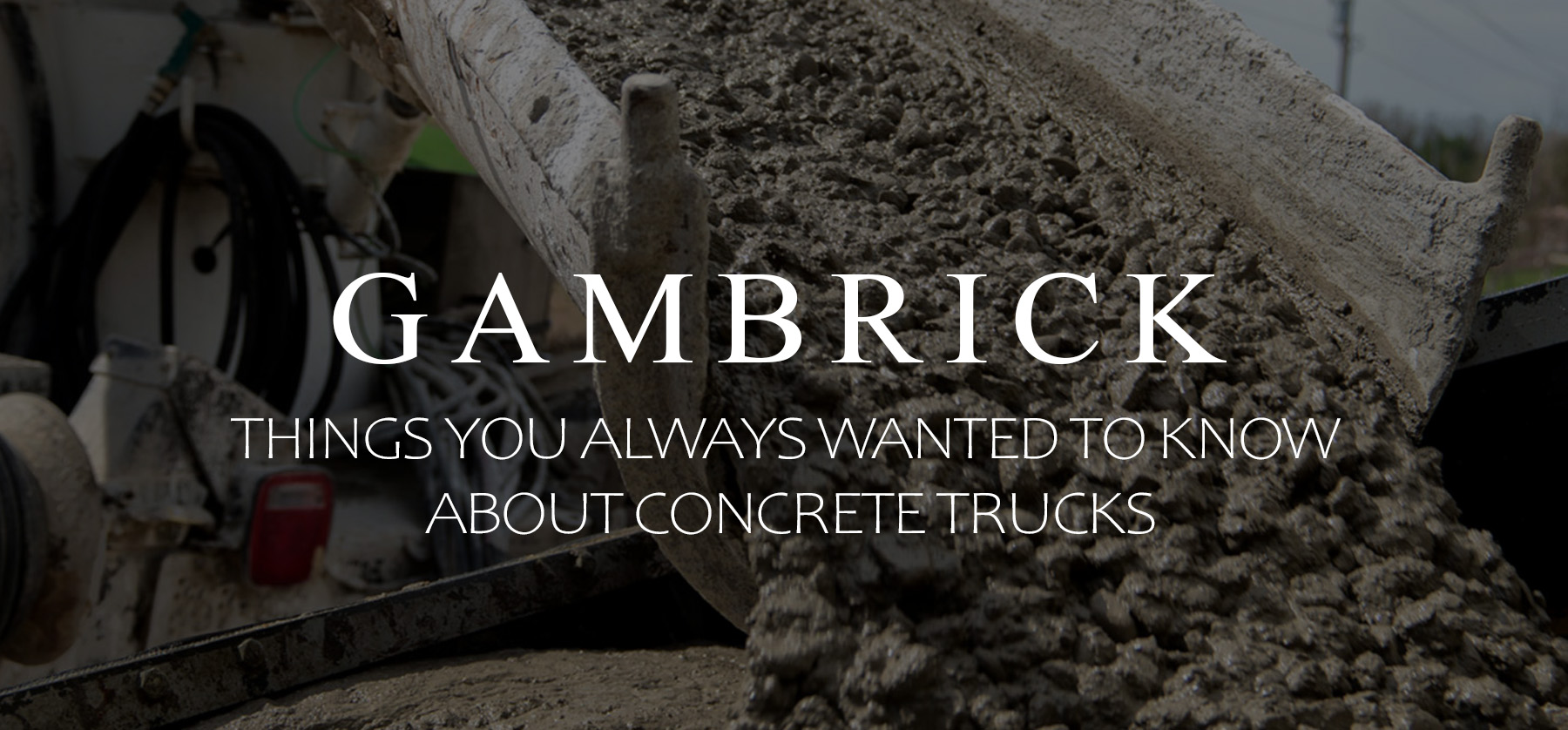
15 Things You Always Wanted To Know About Concrete Trucks
Concrete trucks are designed to transport concrete from the batch plant to a jobsite. They’re strong enough to carry extremely heavy loads and have a mixing drum that constantly spins to keep the concrete wet during delivery. Inside the barrel are blades that help churn the material as the barrel spins. This is called charging. Concrete is either prepared at a plant by mixing stone, sand, cement and water together or mixed inside the truck’s drum as it travels.
A jobsite could be miles away from the plant, so a concrete truck’s job is to both deliver the product and keep it from hardening. These trucks are extremely heavy, usually 20,000+ lbs. even when empty, but can carry over 40,000 lbs of concrete. They also carry up to 300 gallons of fresh water and additional equipment. A fully loaded concrete truck can easily weigh over 60,000 lbs.
Keeping concrete in motion is essential to prevent it from prematurely drying out, which can cause cracks in your finished slab. Should cracks appear, fill them immediately with a crack filler to keep them from getting worse.
How many yards of concrete a truck carries depends on the size of its drum. Every truck is slightly different, but 8 to 10 yards is the average.
Once on site, concrete is poured from the truck through chutes. The barrel is made to spin in the opposite direction which reverses the internal blades. Instead of mixing, the blades now help push, or discharge, concrete from the barrel.
I’ve been a mason for over 25 years and can tell you firsthand how essential concrete trucks are to the construction industry. Many people prefer pouring fresh concrete for some projects vs. using blocks that may be toxic.

1. Are Concrete Trucks Automatic?
Concrete trucks come with either automatic or manual transmissions. Most older trucks were manual but newer models tend to be automatic.
Many also come with all the features found in modern vehicles like power adjustable seats, power windows and mirrors, air conditioning, Bluetooth and backup cameras.
Older model concrete trucks were very bare bones in terms of options. Basically just a steering wheel, radio, stick shift and pedals. But these days trucks tend to have all the features and options of any modern truck. They’re much easier and more comfortable to drive than they used to be.
2. What Are Concrete Trucks Called?
Everyone knows a concrete truck when they see one. Those big mixing drums on the back really make them stand out from anything else on the road. Especially when it’s spinning.
There are a few different names concrete trucks are called which include:
- Concrete Mixing Truck
- Mixing Truck
- Mixer Truck
- Cement Truck
- Cement Mixing Truck
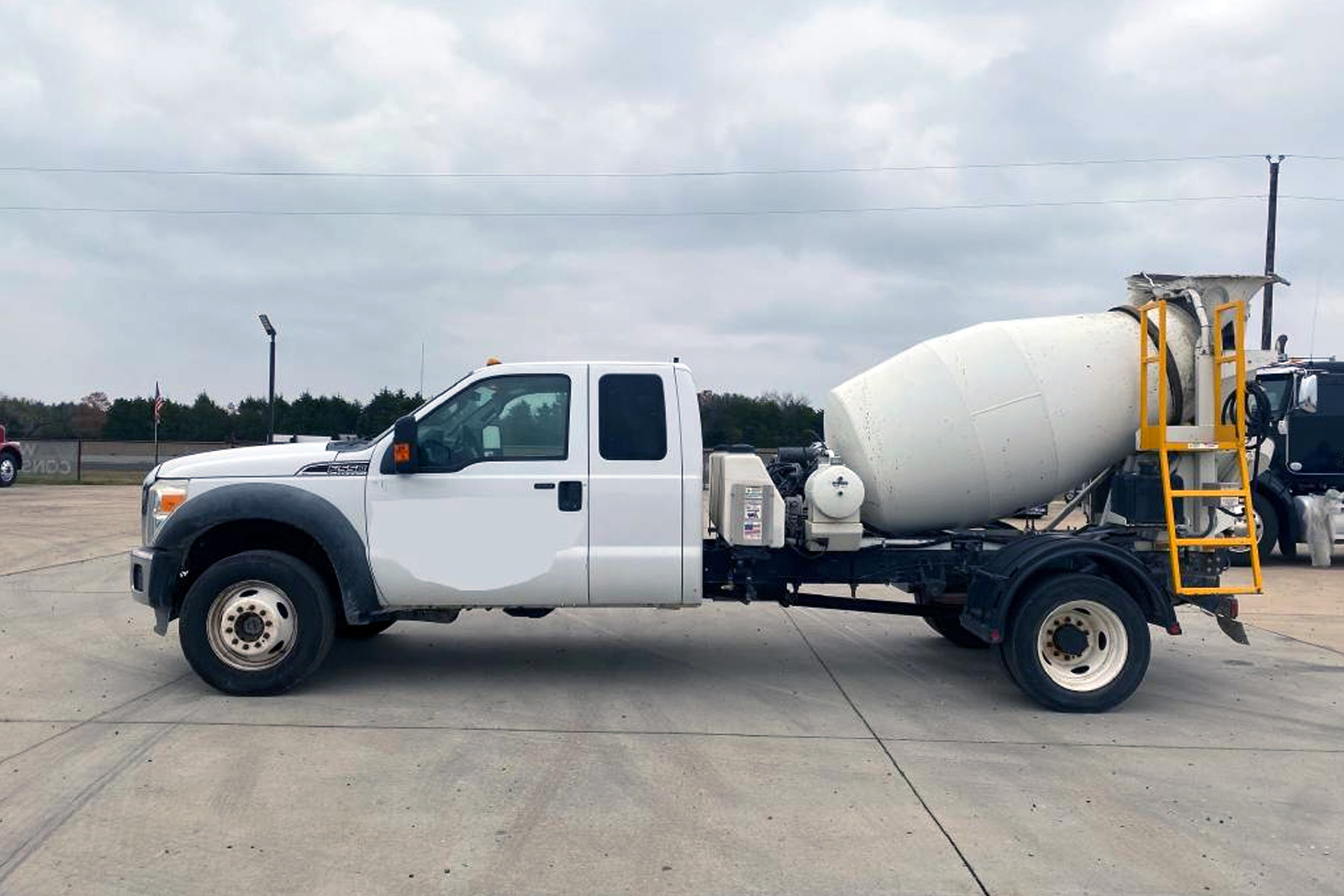
3. Are Concrete Trucks 4 Wheel Drive?
Most concrete trucks are not 4 wheel drive because they don’t have 4 wheels.
Most mixing trucks are multi axle with at least 6 wheels. However, there are smaller trucks with a mixing body in the back. They’re basically a full size F series, Ram or Chevy with a mixing body instead of a truck bed. While they’re not a full size mixing truck, they can still handle over 2 yards at a time which makes them great for small jobs. And they come in 4 wheel drive.
One of the great things about a small mixing truck is that you can adapt pretty much any full size pickup into one. They should be heavy duty enough to haul and support a lot of weight, but it’s just a bed conversion. This means all the technology and comfort you get from a modern pickup can be in your mixing truck too.
Smaller 4×4 concrete trucks are much easier to drive than the big 6 axle trucks. And they don’t have to pay extra fees when going over bridges or paying tolls.
4. How Are Concrete Trucks Cleaned?
It’s actually really easy to clean a concrete truck as long as the material hasn’t hardened. All you need is a hose and fresh water.
Most drivers will hose the truck down immediately after the pour is complete. They wash down all the shoots and the entire exterior of the truck. Anything that got splatter on it should be hosed off before the product can get hard.
At the plant, trucks drive through a large ring with dozens of high powered spray nozzles attached. Water is shot all over the truck to clean any dirt or materials that’s still on the truck. It’s kind of like a huge car wash.
The inside of the drum is cleaned with more fresh water. The drum is filled and spun in both direction to wash out all the remaining concrete in the drum. This is a very important step because you don’t want material getting hard inside the drum.
If concrete gets hard in the drum, a worker has to get in and bang the concrete off the drum. Stuck on product that’s hit hard enough or vibrated will flake off the steel drum. The drum can also be struck from the outside to loosen up product. Chisels can also be used for really hard to clean spots.
Once all the material is chipped off the drum, it can be fully cleaned out.
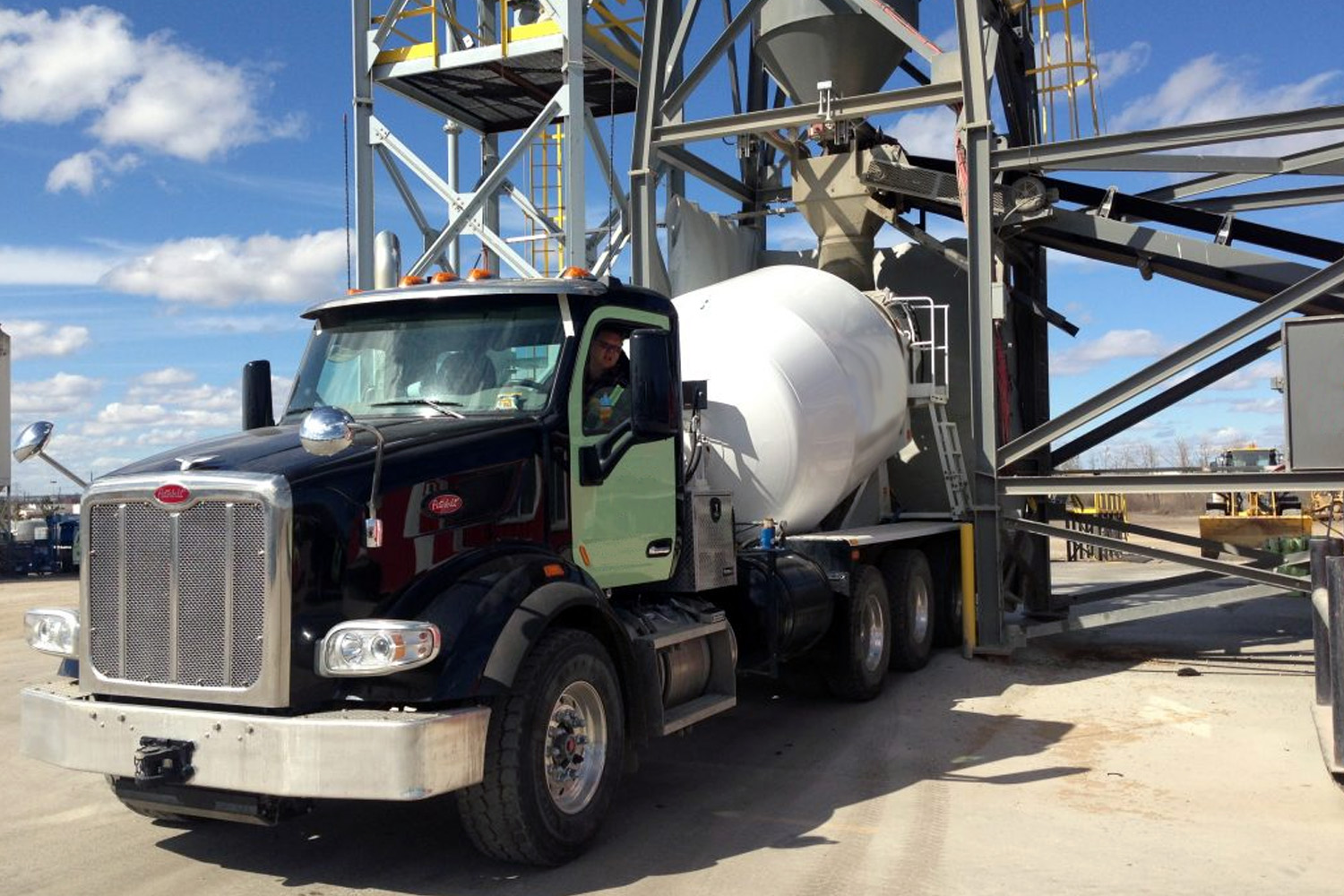
5. How Are Concrete Trucks Loaded?
Concrete trucks are loaded through the same hole in the mixing barrel the concrete comes out of when it’s poured on site.
The difference is in the way it’s loaded. There are two primary methods:
- Ready Mix: Concrete can be poured into the barrel, through the opening in the drum, already mixed.
- Dry: Stone, sand and cement can be poured into the drum completely dry. Then water can be added into the drum as it turns to mix the concrete. If you’re delivering material really far away or in very hot weather it can be better to mix right before you pour because there’s less chance the product can harden prematurely.
Trucks are always loaded by machines and lots of conveyor belts. This is not a job that’s done by hand.
6. Where Are Concrete Trucks Made?
When you buy a concrete truck, you can either buy one that’s already fully assembled or you can get an existing truck and assemble the drum and hydraulics separately. The truck and the drum are two separate pieces that make up a concrete truck.
The trucks are made at plants just like any other commercial truck. Mack is a manufacturer that makes excellent concrete trucks. Every heavy-duty class 8 Mack truck built for the North American market is assembled right here in the U.S. at its Mack Lehigh Valley Operations facility in Macungie, PA.
Peterbilt is another excellent manufacturer of heavy-duty class 8 trucks that are made in Denton, Texas.
Smaller trucks are a little different. They’re basically a standard heavy duty pickup with a mixing body attached. The mixing bodies are typically made in China and shipped here and then mounted to a pickup. Where the truck is made depends on which model truck you buy.
Concrete trucks are made all over the world, typically by a manufacturer located in or near the country they’re used in.
Most of the parts used to build a concrete truck come from countries other than where the manufacturing plant is. Usually the trucks are assembled at the plant, but they don’t actually make all the parts there. This is the same way pretty much all vehicles are made.
The drum, electronics and hydraulic systems that mix and pour the concrete are made by companies that specializes in this type of work. They’re not made by the same manufacturer that builds the truck. The company we use is called Con-Tech Manufacturing. They’re located in Dodge Center,MN.

7. How Tall Are Concrete Trucks?
Concrete trucks come in a variety of sizes which have different heights. Here’s a basic breakdown:
- Standard: The standard size concrete truck holds 8-14 yards of product. They come in two basic designs. Front or rear loading. Rear loading trucks are lower because the shoot doesn’t reach over the cab. They’re about 11 feet tall. Front loading trucks are higher because the shoots extends up and over the cab. They’re usually around 13 1/2 feet high.
- Small: Smaller concrete trucks,often called mini mixers, have a much smaller drum that holds around 4-5 yards of concrete. They’re usually about 9-10 feet tall.
- Pickups: A standard heavy-duty pickup with a 2 yard mixing body is around 8-9 feet tall.
8. How Much Are Concrete Trucks?
Concrete trucks range in price just like any other type of truck.
A brand new 2023 concrete truck costs between $200,000 – $300,000. That’s for a fully assembled truck with the mixer already attached. You can save a little money if you buy the truck and mixer separately.
Depending on the options you select and the size of the truck, they can cost over $350,000.
A brand new 2023 567 Perterbilt Heavy-Duty concrete truck costs around $300,000. Peterbilt is an excellent truck manufacturer that’s on par with Mac in terms of pricing.
Used concrete truck prices vary quite a bit. You can buy an 8-10 used mixing truck for as little as $20,000. But they usually have very high mileage and need work.
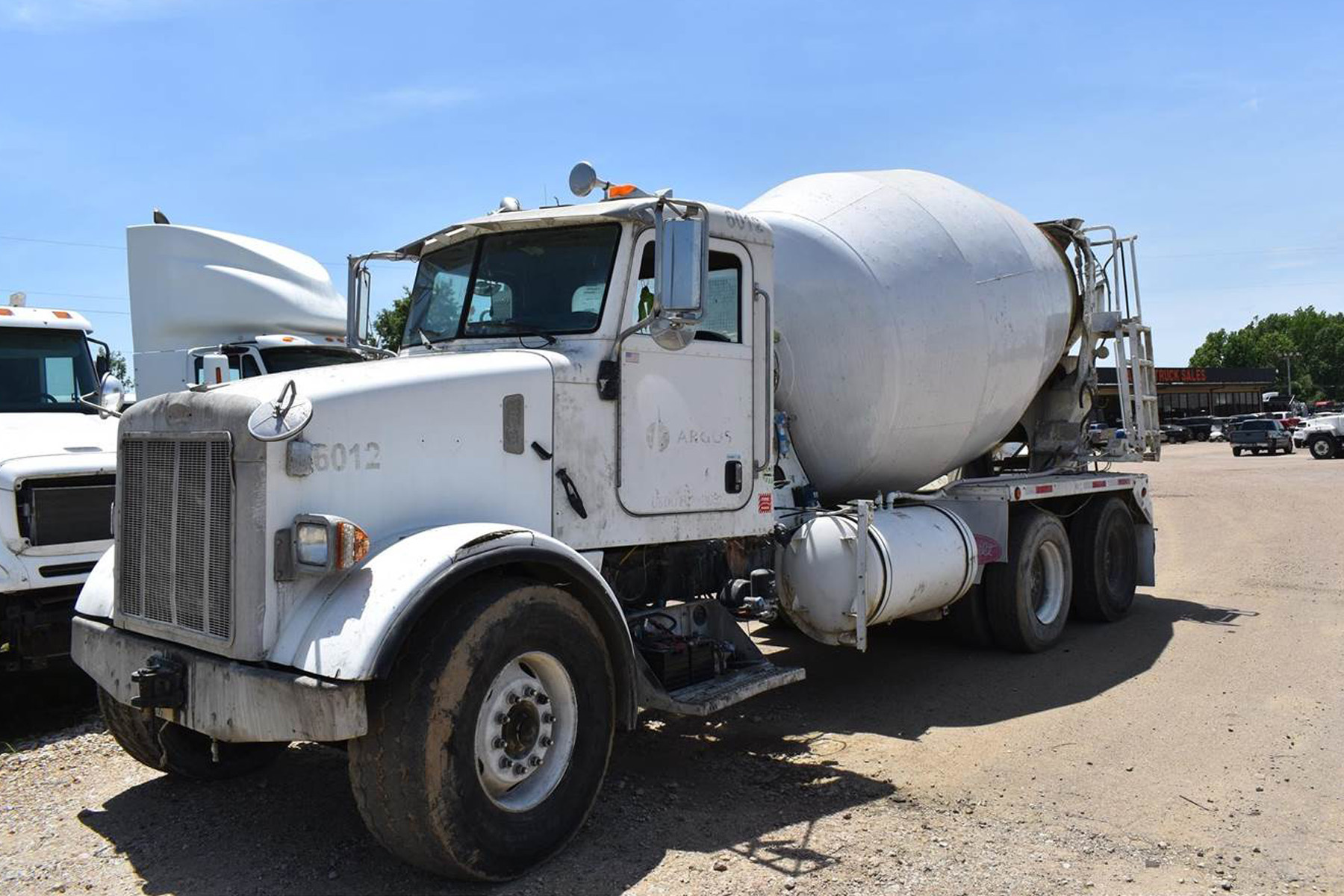
9. How Heavy Are Concrete Trucks?
Concrete trucks vary in weight depending on how big they are. The average is between 20,000 – 30,000 pounds for an 8-14 yard capacity truck when empty.
Trucks also carry additional equipment like concrete shoots and water tanks. The shoots can easily add 500 pounds to a truck and water is around 8 lbs. per gallon. Most trucks have a 200 gallon tank so that’s around an additional 1600 lbs. of water and 500 lbs. of gear.
When fully loaded, concrete weighs around 4050 lbs. per yard. For an average 10 yard truck that’s around an additional 40,000 lbs.
Most fully loaded concrete trucks can easily weight over 60,000 lbs. That weight makes them unsafe to drive on some smaller roads and bridges. It can also be dangerous to drive on a driveway, sidewalk or patio. Whenever possible I recommend keeping the truck in the street and pumping it to the pour site.
10. Is It Hard To Drive A Concrete Truck?
A full size concrete truck isn’t easy to drive for the average person.It requires special training and a CDL license. They’re Heavy-Duty class 8 commercial trucks that can potentially be hauling over 40,000 pounds of concrete while its mixing. But if you’re properly trained and experienced, the newer trucks are actually pretty easy to drive.
Newer trucks were harder. The trucks had less power, didn’t handle or break as well and were usually a stick shirt. These days, modern concrete trucks can have all the options of a luxury truck. They handle, turn and break better and come with an automatic transmission.
Modern engines and transmission have improved a lot over the years too so the trucks are easier to drive.
If you have to drive an older concrete truck it’s harder. The ride is usually a lot stiffer, the trucks are generally under powered, handle and turn poorly and many don’t have modern features like power windows or air conditioning. But as long as they can get to the jobsite and back while mixing the concrete they’ll do fine.

11. How Much Concrete Does A Concrete Truck Hold
An average full size concrete truck holds between 8-10 yards of concrete. larger trucks typically used on large scale commercial or industrial projects hold up to 14 yards.
Small concrete trucks, often called minis, hold around 4-5 yards.
Pickup trucks with a concrete mixer bed can hold around 2 yards.
Concrete is a volume measurement that’s measured in cubic yards. A yard of concrete weighs around 4050 pounds. So a fully loaded 10 yard truck is holding around 40,500 pounds of concrete.
12. How Long Can You Keep Concrete In The Truck?
Under normal conditions you can keep concrete in the truck for around 1 1/2 hours. However I mix it periodically during that time frame and again just before pouring.
You don’t want to leave concrete inside a mixer for more than 1/2 an hour without mixing it because it’ll start to set up.
In hot or really dry weather, concrete can start to harden faster than normal. Make sure you keep the mixer on to prevent the concrete from getting hard.
Mixing concrete won’t prevent it from getting hard forever. It’ll eventually dry out and get flaky which means it won’t be able to get hard. To prevent this, you can water the concrete to keep it moist. Just don’t over water it because you can weaken the concrete.
Ideally I try to pour concrete within an hour from the time it left the plant to when it reaches my jobsite.
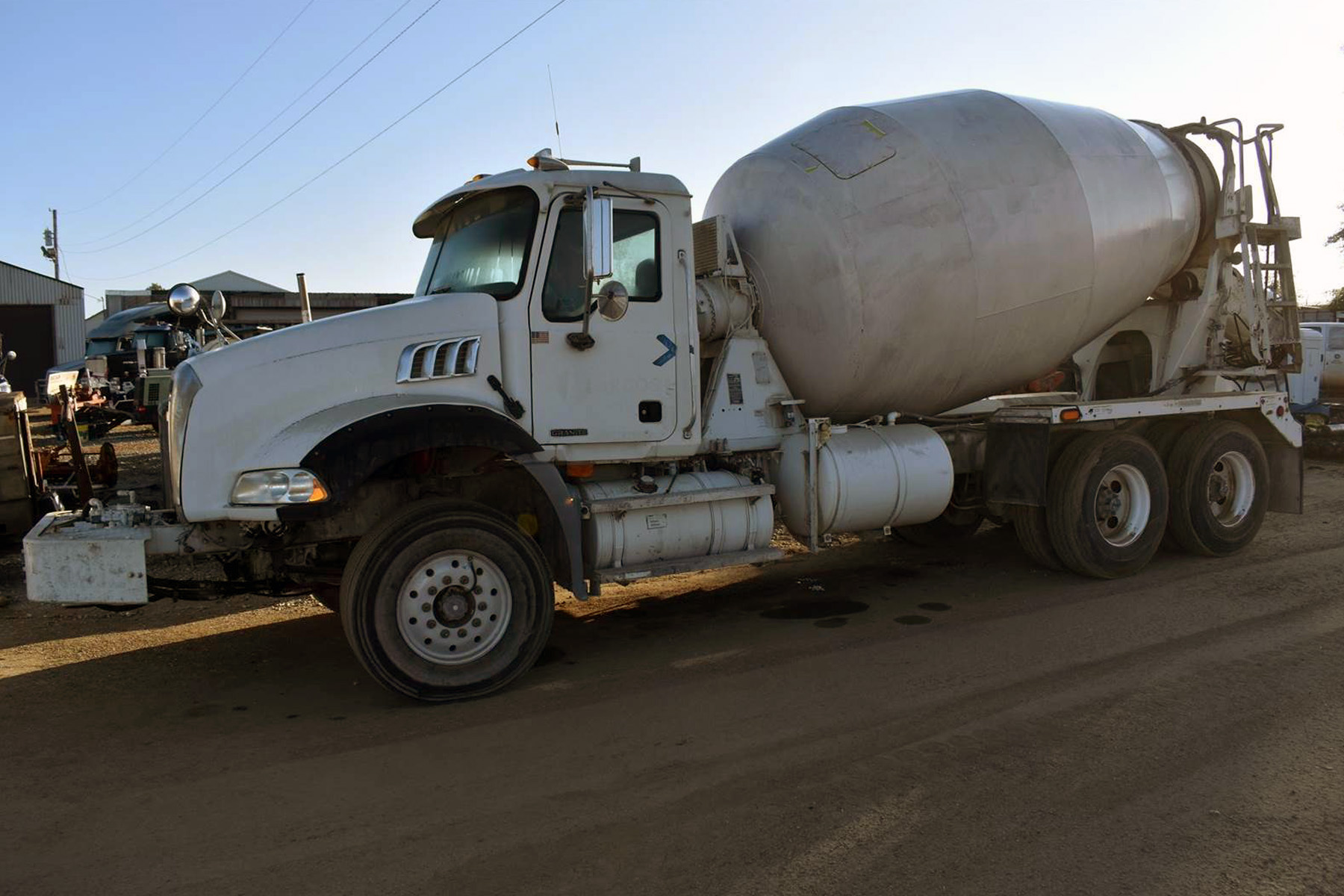
13. How Do Concrete Trucks Pour?
Concrete trucks pour concrete out of the mixing barrel by reversing the direction the barrel spins. Inside every mixing barrel are blades that churn the concrete as the barrel spins. When the spin direction is revered, the blades push material out of the barrel rather than mixing it.
Once the concrete starts coming out of the barrel, it’s fed into a chute. The chute can be lengthened to reach various parts of the job. An experienced driver can place concrete right where want it around 18 feet away from the truck. This is the most common method trucks pour concrete that’s ground level and near the truck.
To reach longer distances or locations that are up high, concrete is poured into a pump. Once in the pump, concrete can be shot through a hose to far or high locations around the job.
14. How Far Can A Concrete Truck Pour Concrete?
A concrete truck using chutes can pour concrete about 18 feet away. That’s measured from the edge of the truck to the point of discharge.
The wheels of a ready-mix truck must be kept at least 1 foot away from below-grade walls and 1 foot away from excavations and trenches. This is due to the extreme weight of the truck. You should also keep a fully loaded truck off thin or soft concrete, anything that can break, weak soil or below ground tanks.
When concrete trucks are paired with a pump, they can pour concrete much further away. In some cases material can be poured hundreds of feet away from the truck. Basically how they work is the truck pours concrete into the pump, and the pump shoots concrete through hoses to wherever you need it.
Concrete trucks that come with a pump attached are called pump trucks. They usually have long arms that extend out to deliver concrete right where you need it. They’re great in tight spaces because you can pour concrete over a house or into a high rise building.
Standalone pumps that are not attached to the concrete truck can also be used and they work in the exact same way. Once in place and turned on, they’ll shoot concrete to wherever the hoses can reach. All the truck has to do is pour material into the pump.
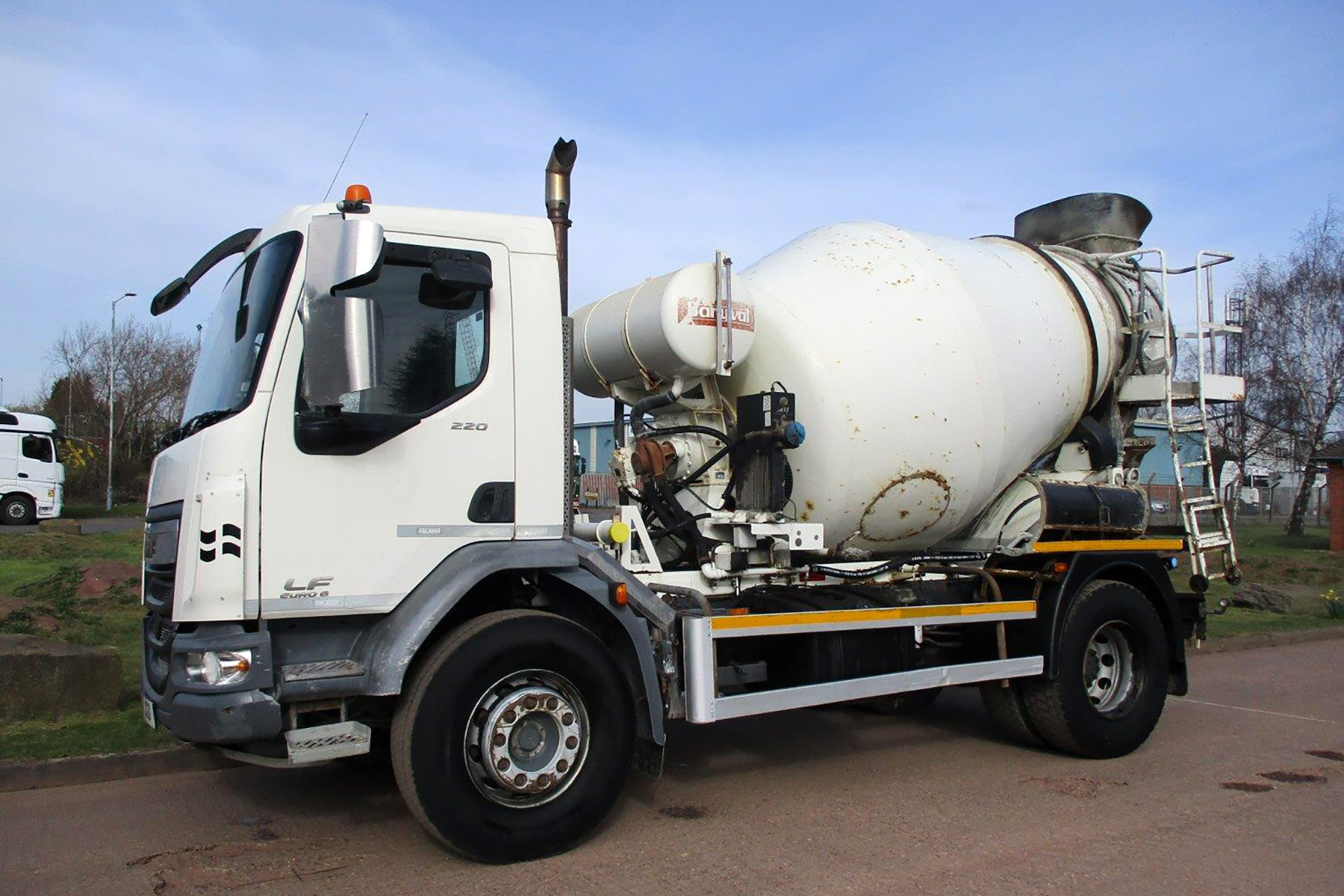
15. Whats The Difference Between A Cement Truck And A Concrete Truck?
Nothing. There’s no difference between a cement truck and a concrete truck. They’re actually the exact same thing.
The terms concrete and cement are often used interchangeably. But the truth is, they’re not the same. Cement is the active ingredient in concrete along with sand, stone and water. But cement and concrete are different products. You would never use cement in place of concrete or vice versa.
When you see a concrete truck with a mixing barrel on the back, it’s a concrete truck. Even though some people may refer to it as a cement truck or some other name.
Gallery
Here’s a small gallery filled with a variety of concrete truck designs and sizes. As you can see, there’s no one standard size or shape concrete mixing truck. Some are front load, some rear. They have different cab shapes and wheels.
Most trucks are at least 6-8 wheel and carry between 8-14 yards of concrete. However small “mini” concrete trucks are 4 wheel and carry around 4-5 yards.

Front load concrete trucks are higher averaging around 14 feet in height.
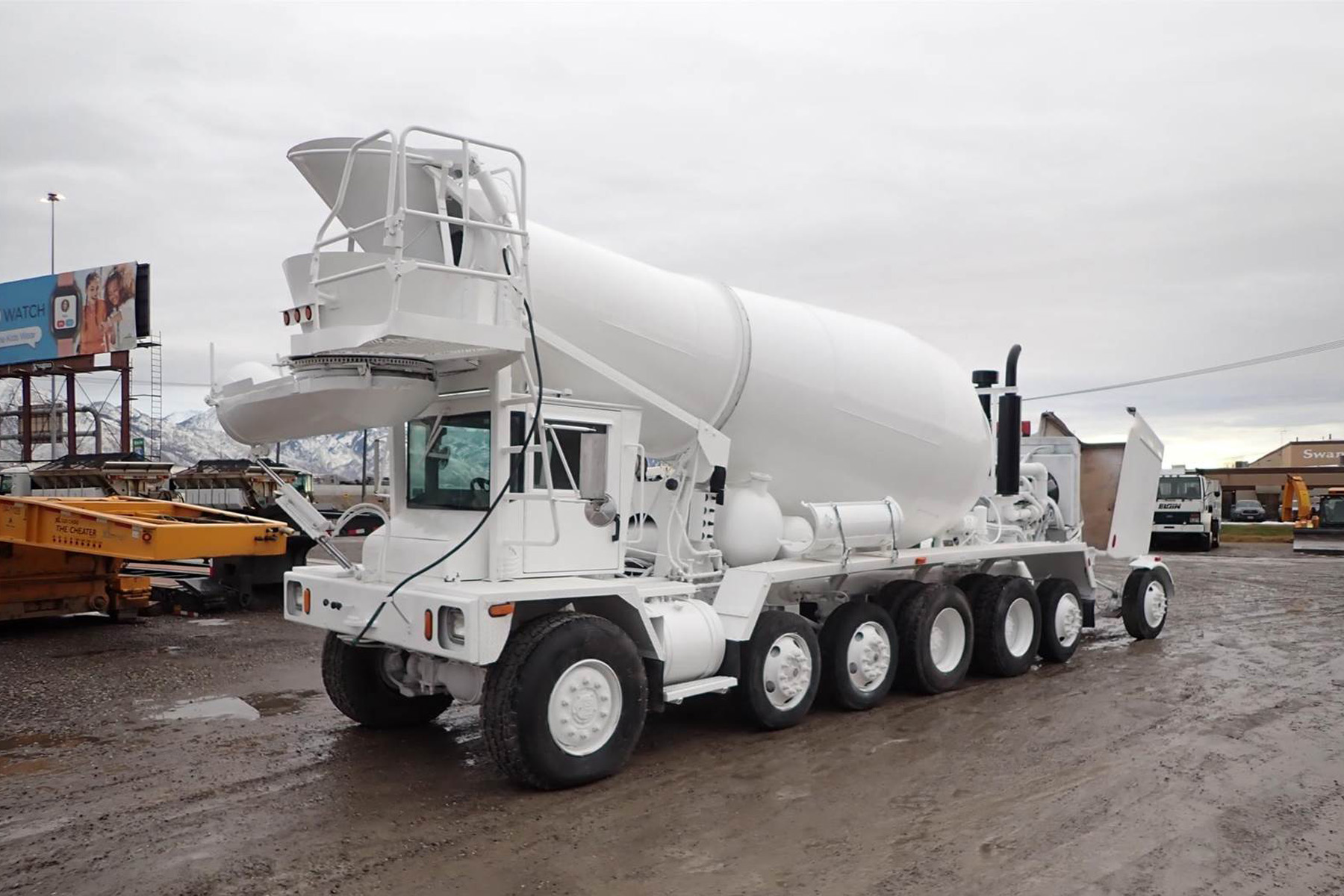
Large concrete trucks can hold upwards of 14 yards of concrete.
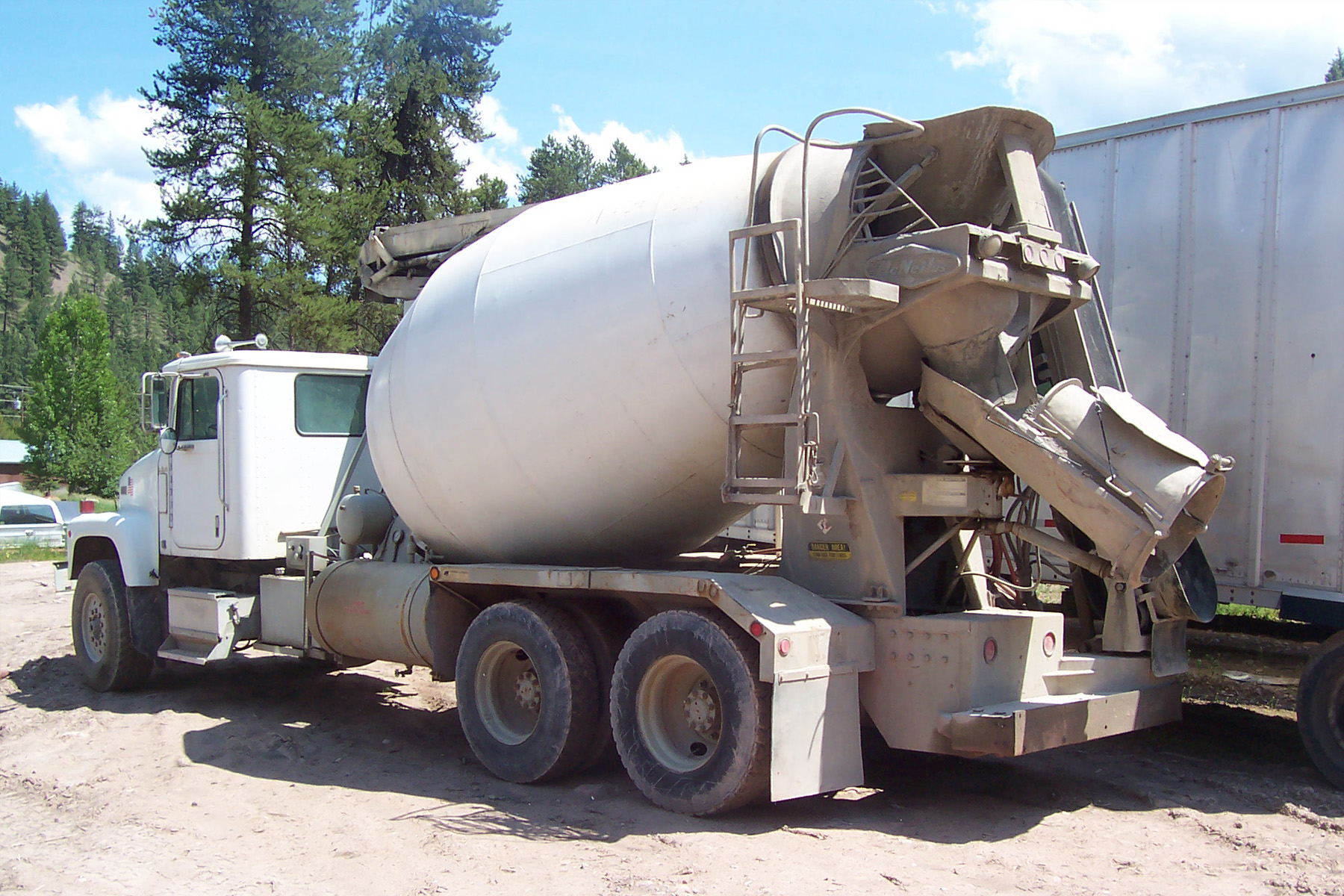
The rear of a concrete truck is where it’s both loaded and discharged into the chute.
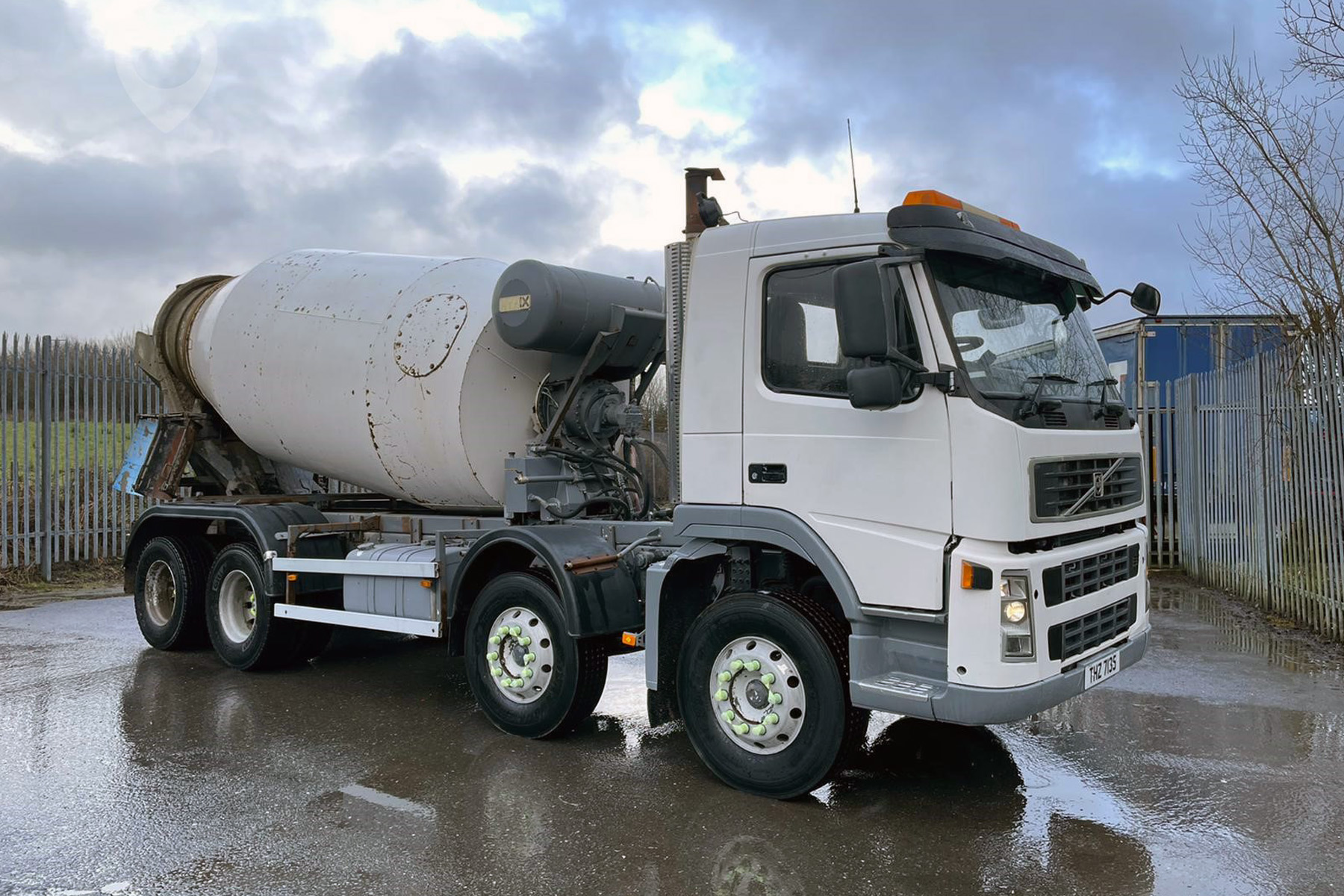
This small concrete truck is multi axle but still only holds up to 5 yards of concrete. The mini trucks are lower and lighter than a standard full size mixing truck.
Summary: 15 Things You Always Wanted To Know About Concrete Trucks
Concrete trucks are designed to transport concrete from the batch plant to a jobsite. They’re strong enough to carry extremely heavy loads and have a mixing drum that constantly spins to keep the concrete wet during delivery. Inside the barrel are blades that help churn the material as the barrel spins. This is called charging. Concrete is either prepared at a plant by mixing stone, sand, cement and water together or mixed inside the truck’s drum as it travels.
A jobsite could be miles away from the plant, so a concrete truck’s job is to both deliver the product and keep it from hardening. These trucks are extremely heavy, usually 20,000+ lbs. even when empty, but can carry over 40,000 lbs of concrete. They also carry up to 300 gallons of fresh water and additional equipment. A fully loaded concrete truck can easily weigh over 60,000 lbs.
Keeping concrete in motion is essential to prevent it from prematurely drying out, which can cause cracks in your finished slab. Should cracks appear, fill them immediately with a crack filler to keep them from getting worse.
How many yards of concrete a truck carries depends on the size of its drum. Every truck is slightly different, but 8 to 10 yards is the average.
Once on site, concrete is poured from the truck through chutes. The barrel is made to spin in the opposite direction which reverses the internal blades. Instead of mixing, the blades now help push, or discharge, concrete from the barrel.
I’ve been a mason for over 25 years and can tell you firsthand how essential concrete trucks are to the construction industry. Many people prefer pouring fresh concrete vs. using blocks or precast products.
If you have any questions email or leave a comment below.

John Mazzuca | About | More Posts |
Custom Home Builder
John Mazzuca is a custom home designer and builder at Gambrick with over 25 years experience in the construction industry. John has designed, built and/or remodeled hundreds of homes, small buildings, and commercial projects. He writes about business, real estate, home building, and household electronics. His work has been featured in Fox Business, Better Homes & Garden, House Beautiful, and more.




